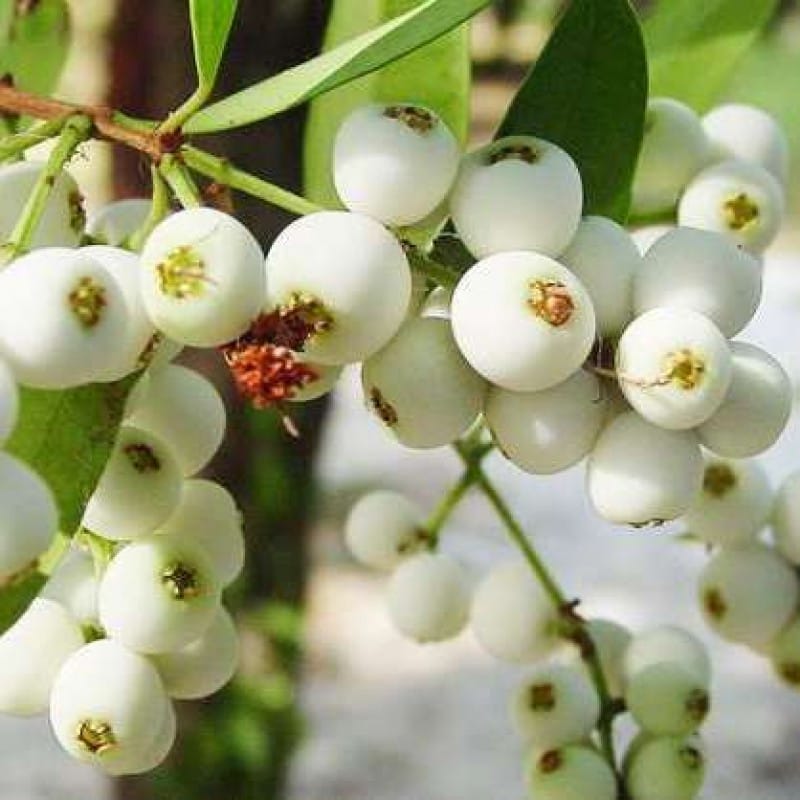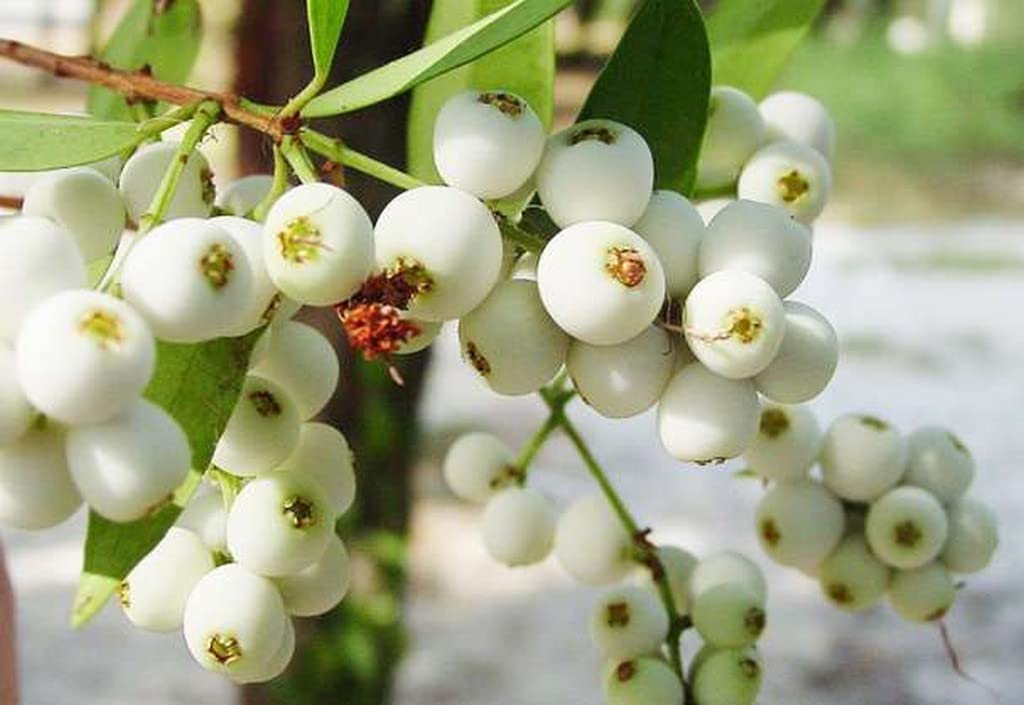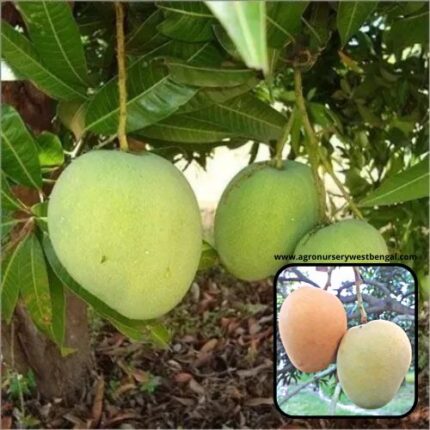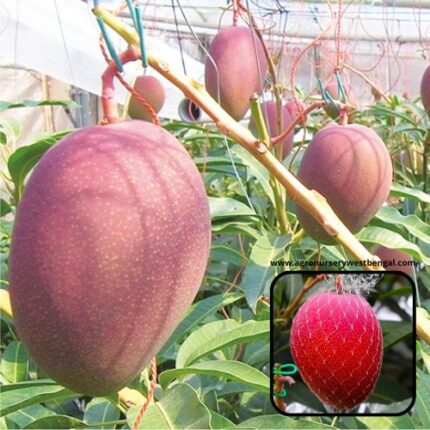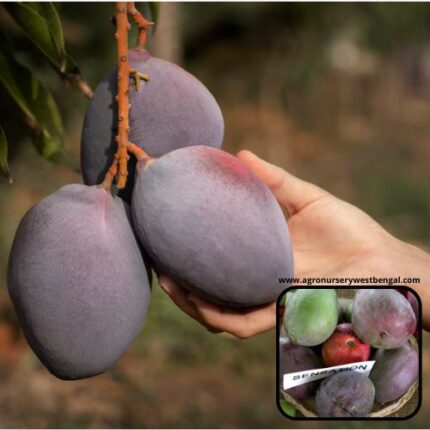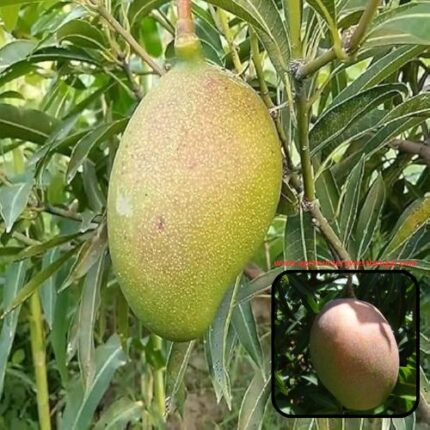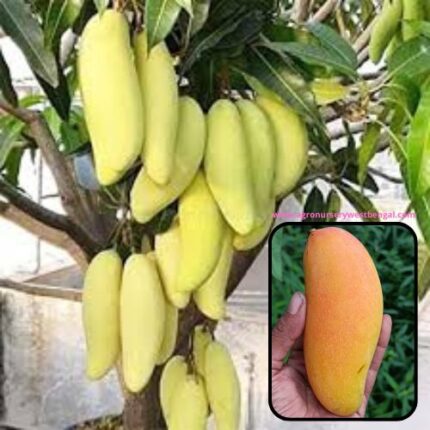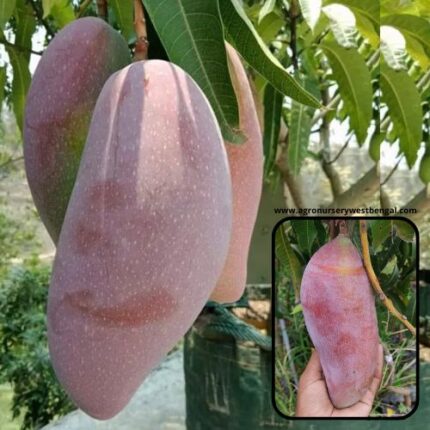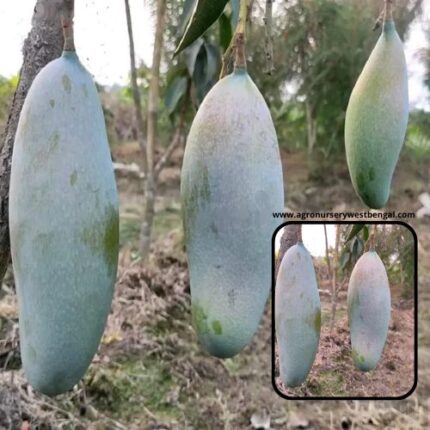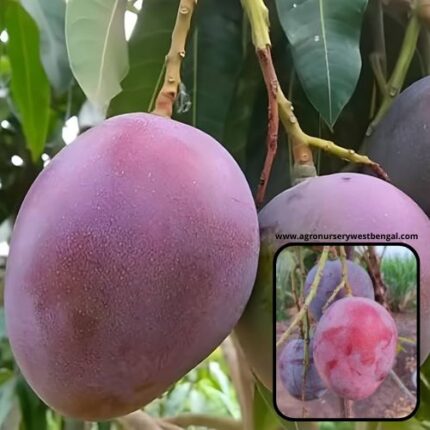

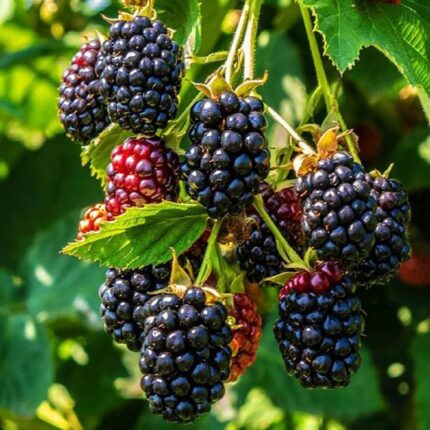

Cat’s Eye Berry fruit plant
₹1,499.00 Original price was: ₹1,499.00.₹999.00Current price is: ₹999.00.
“Cat Eye Fruit” is a fascinating and somewhat rare tropical fruit, primarily known by its local name Poocha Pazham in Malayalam (Kerala, India), and also called Jambu Kucing in Malaysia/Indonesia, and Mata Pusa in Thailand/Philippines. Its scientific name is Syzygium zeylanicum, placing it in the same genus as Jamun, Rose Apple, and Wax Apple.
Here’s a detailed description:
1. The Plant (Tree):
Appearance: The Cat Eye Fruit tree is a small to medium-sized evergreen tree, typically growing 4-6 meters (13-20 feet) tall, though some sources mention up to 10-12 meters. It has a light brown bark and attractive, dense dark-green pinnate leaves.
Flowers: The tree produces small, fragrant, yellowish-white flowers that are often described as looking like “cat fur” or “tufts of cat hair,” which is one of the reasons for its common name. These flowers typically appear in terminal panicles (clusters).
2. The Fruit:
Appearance:
Shape & Size: The fruits are small and round, usually clustered in bunches, somewhat resembling tiny grapes or marbles.
Outer Skin: When young, the fruit is green, but upon ripening, it turns a distinctive white or creamy white color, becoming slightly translucent.
Internal Structure: When cut or bitten into, the most striking feature is revealed: a single, shiny, smooth, and typically black seed encased within a translucent, somewhat gelatinous or juicy pulp (aril). This combination of the translucent white flesh surrounding the dark seed is what strikingly resembles a “cat’s eye,” giving the fruit its unique common name.
Taste and Flavor Profile:
The taste of Cat Eye Fruit is generally described as mildly sweet and slightly juicy.
It often has a delicate floral note or a subtle aroma similar to puffed rice (or even fried rice flakes, as some descriptions mention).
It’s not intensely flavorful like some other tropical fruits, but rather offers a refined, refreshing, and delicate sweetness without being overpowering.
The texture is soft and tender.
3. Ripeness:
The fruit is ripe when it achieves its characteristic white, slightly translucent appearance and is easily detachable from the cluster.
4. Culinary Uses:
Fresh Consumption: Cat Eye Fruit is primarily enjoyed fresh, eaten directly from the tree as a refreshing snack.
Light Dishes: Its mild sweetness and delicate flavor make it suitable for adding to fruit salads or smoothies, where it won’t overpower other ingredients.
Traditional Beverages: In some cultures, it’s occasionally used in homemade fruit wines or other fermented beverages.
Garnish: Its unique appearance can make it an interesting garnish.
5. Nutritional and Medicinal Value:
Cat Eye Fruit is cherished in its native regions for its health benefits:
Rich in Protein: It’s noted for its protein content, which is quite unusual for a fruit.
Minerals: Contains essential minerals and micro-minerals important for overall health, including bone strength and immunity.
Folate & Iron: Important for red blood cell production and energy levels.
Antioxidants: Packed with antioxidants, which help in detoxification and cellular health.
Dietary Fiber: Aids digestion and promotes gut health.
Low Calorie & Hydrating: Its high water content makes it refreshing and a low-calorie option.
Traditional Medicine: In various traditional medicine systems, it’s used for its healing properties, including aiding digestion, boosting immunity, regulating blood pressure, and promoting brain and body development (especially for children).
6. Rarity and Rediscovery:
Cat Eye Fruit was once more common in areas like Kerala, India, but has become relatively rare. However, there’s a growing interest in rediscovering and cultivating this unique fruit due to its nutritional value, mild taste, and ornamental appeal. It’s considered a “cherished gem” in South Asian horticulture.

